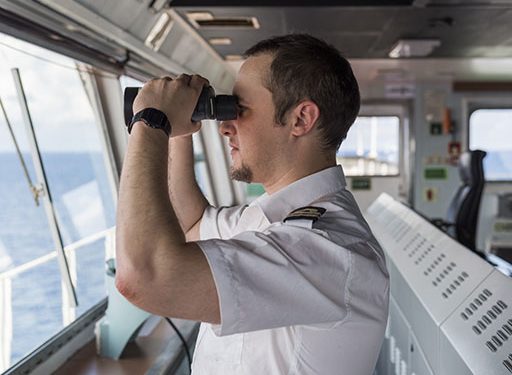Last week, major Associations released guidance, for reading in conjunction with latest version of BMP, for vessels transiting the Southern Red Sea and Gulf of Aden area, as the Houthis have broadened their threats beyond vessels they believe have links with Israel. Consequently, many owners and operators have decided to take alternative routes.
Attacks using surface- and air drones and missiles have been conducted during daylight as well as during hours of darkness in the Southern Red Sea, the Bab el Mandeb, and the Gulf of Aden. Therefore, the following key considerations need to be taken into account:
Voyage planning considerations
It is recommended to follow the instructions in the latest version of BMP for registration with authorities, i.e. EUNAVFOR and UKMTO, which whilst aimed at piracy, will also cover most recent threats. Some flag state authorities may also require national registration with navies operating independently in the area.
As BMP highlights, ships planning passage through the Southern Red Sea and Gulf of Aden should conduct a thorough ship and voyage-specific threat and risk assessment considering any additional advice from their flag State. These assessments should include input from official sources, such as JMIC, MSCHOA and UKMTO.
Additional information such as operational specifics, shipping associations guidance, ownership details, and ship’s trading history over the ship in the last 3 years should also be considered.
Ship operators who have called, or plan to call, at Israeli ports should limit information access. Published information could be used by Houthi forces as part of their targeting process. Companies experiencing incidents on their ships, should CONSIDER the likelihood the Houthis may target their ships in the future.
Routing considerations
The Bab el Mandeb Strait is a narrow passage, and when ships are traveling northbound within the Traffic Separation Scheme, they may be as close as seven nautical miles from the Yemeni coastline. Spacing between vessels needs careful consideration, attacks intended for one vessel have, due to poor targeting, may result in another vessel close by being hit.
The Maritime Security Transit Corridor (MSTC) is the amalgamation of the Internationally Recommended Transit Corridor (IRTC), the Bab el Mandeb Traffic Separation Scheme and the Traffic Separation Scheme West of Hanish Islands, and a two-way route directly connecting the IRTC and the Bab el Mandeb Traffic separation Scheme.
Collation warships operating in the area focus on the MSTC.
Ship hardening
Ship hardening measures are described in the latest version of BMP found on the website. The company risk assessment and planning process should identify the location of security muster points within a ship. These will vary depending on the threat i.e. threat from piracy (citadel), threat from WBIED/UAV (above waterline). Use of these secure locations provide valuable time for naval ships within the area to provide assistance.
A Security Muster Point is a designated area providing maximum physical protection for the crew. It should be located above the waterline if there’s a risk of hull breach. The central stairway and cross alleyways, protected by the accommodation block and above the waterline, is often suitable. When selecting the location, consider potential blast paths from explosive devices.
An armour-plated door at the bottom of the central stairwell will reduce the effect of blast for example from a WBIED. Consideration of PPE for the crew is essential. PPE available at the security muster point may be considered, including a fireman’s outfit.
In the event of an imminent explosion, the crew should adopt the Brace Position with arms/legs bent, hands holding onto something solid, and feet firmly planted on the deck, to protect personnel from shock waves.
Use of citadel requires thorough preparation and understanding of advantages and disadvantages. Prior to entry into the threat area, the crew should be very familiar with the alarms to be used as a different one for the security muster point must be used compared with the general emergency alarm.
AIS considerations
Ships with AIS switched on, as well as off, have been attacked. Turning off AIS makes it marginally more difficult to track a ship but may also hinder the ability of the military to provide support or direct contact. According to IMO Circular
If the master believes that the continual operation of AIS might compromise the safety and security of his/her ship or where security incidents are imminent, the AIS may be switched off.
Limiting the information in AIS data fields or switching off AIS could make a ship harder to locate but it is unlikely to prevent an attack. It is however likely ships are tracked by multiple sources and turning off AIS alone will not prevent detection by the Houthis. Limiting AIS data to the mandatory fields and omiƫng the next port of call (NPOC) could be considered.
Ships transiting with AIS switched off through the affected area should provide position reports to NAVCENT NCAGS and UKMTO every 2-3 hours to ensure the military forces are aware of their presence and can assist in the event of an incident.
If AIS is turned off, consider altering course and speed to hamper route predictability by dead reckoning. Dead reckoning is used by the Houthis especially when deploying ballistic antiship missiles, which have poor terminal guidance and are largely aimed at a geographical coordinate. To the same end, avoid loitering when transiting the threat area.
Other precautions during passage
Ship owners, operators, managers, and staff should regularly evaluate the risks to their ships, including navigation and collision avoidance, and plan routes accordingly. The consequences of e.g. turning off radars to reduce identifiable electronic emissions should be carefully assessed.
Maintaining lookouts during the entire passage of the region, regardless of timing, is necessary. Visually detecting and classifying small contacts at night, such as a WBIED/USV, remains a challenge. Tankers should ensure that the inert gas systems are available for immediate use.
Considerations regarding armed guards
Complete a thorough risk assessment when considering the use of armed guards. Caution should be taken when managing their employment and rules of engagement should consider the risk of escalation as well their ability to counter a USV threat.































































